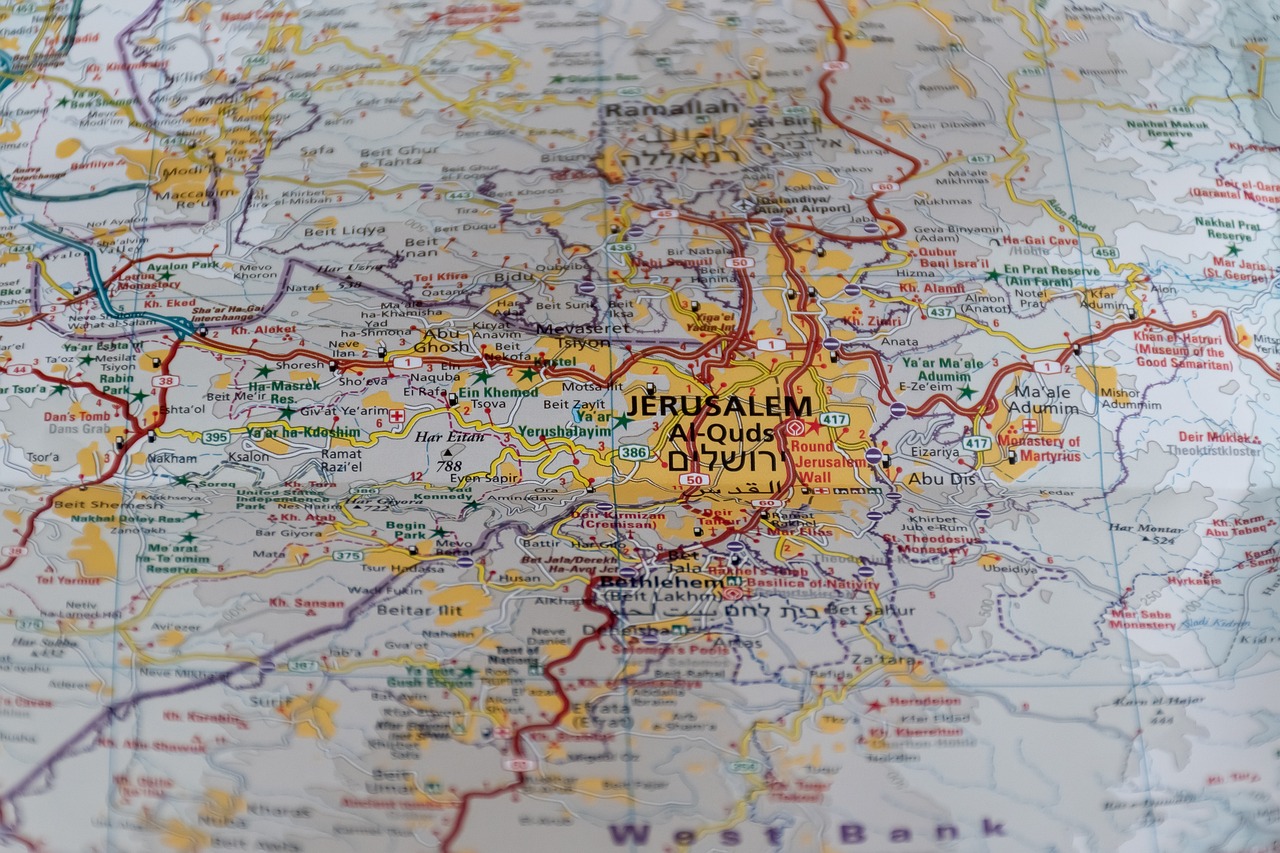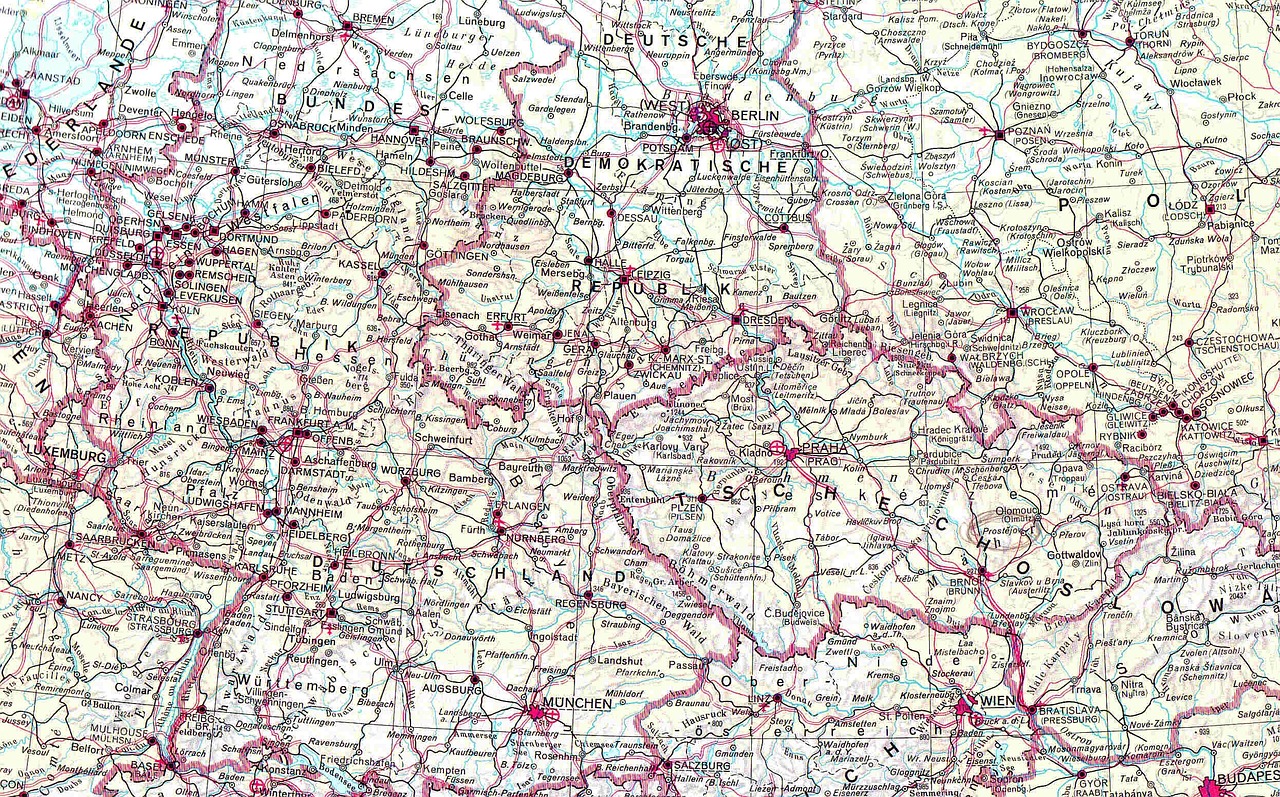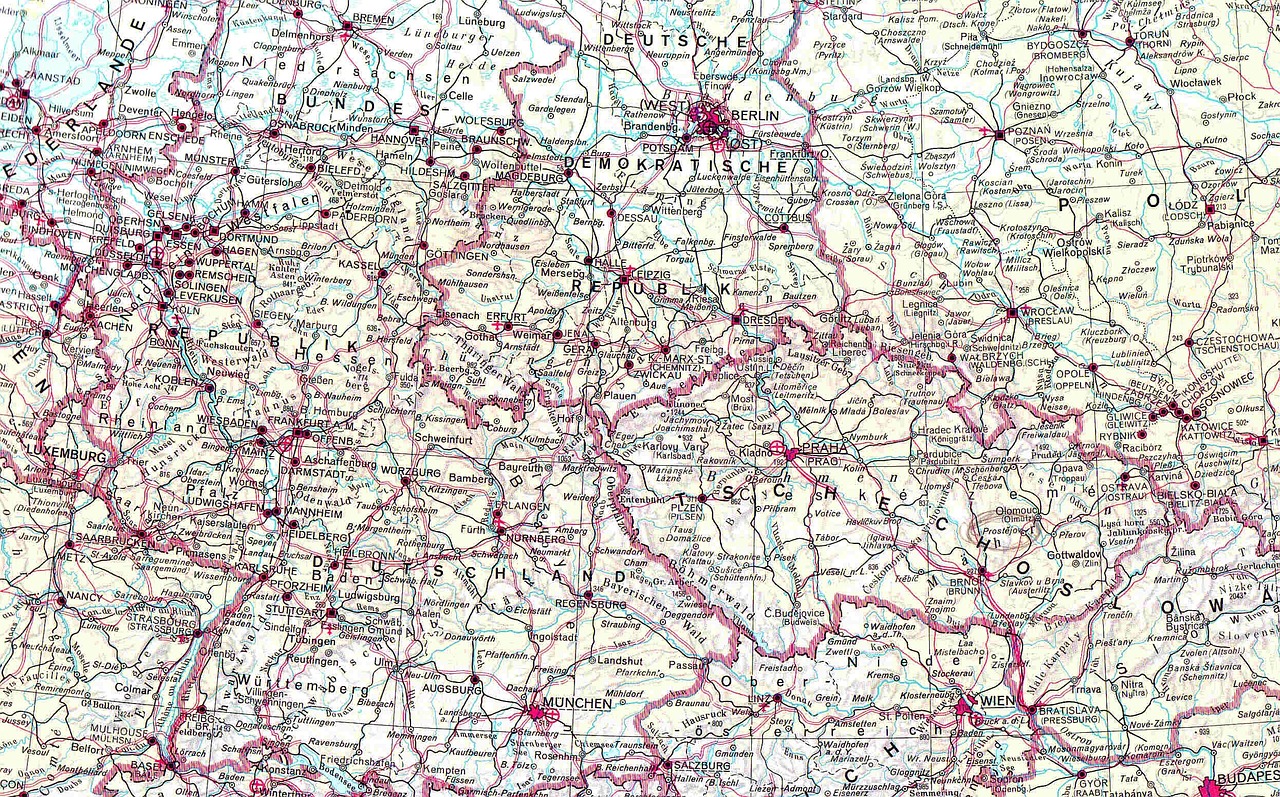Creating an Emergency Evacuation Map for Your Home
This article explores the essential steps to design an effective emergency evacuation map, ensuring safety and preparedness for all household members during unexpected situations.
An evacuation map is crucial for guiding family members to safety during emergencies. It provides a clear visual representation of escape routes and safety zones, enhancing preparedness and reducing panic. Imagine the chaos that can ensue if everyone is unsure where to go! Having a well-defined map can make a significant difference in ensuring that everyone knows the quickest and safest way out. It’s like having a treasure map, but instead of gold, it leads to safety!
Recognizing hazards is the first step in creating an evacuation map. Common risks, such as fire, floods, or severe weather, necessitate a well-thought-out escape plan. Start by walking through your home and asking yourself: What could go wrong? Here are some typical hazards to consider:
- Fire: Check for potential fire sources such as faulty wiring, candles, or cooking appliances.
- Flooding: Identify areas that are prone to flooding, especially if you live in a low-lying area.
- Severe Weather: Consider the risks associated with storms, tornadoes, or hurricanes.
By identifying these hazards, you can better prepare your evacuation map to address specific risks that your home might face.
Understanding the layout of your home helps in plotting effective escape routes. Take a moment to visualize your home as a maze. You wouldn't want to get lost in a maze during an emergency! Evaluate room arrangements and identify the best exits for a quick evacuation. Consider factors like:
- Width of hallways
- Obstructions like furniture
- Location of windows and doors
Mapping out these details will help ensure that everyone knows the fastest way to safety, even if the lights go out!
Selecting primary and secondary exits ensures multiple escape options. Think of it as having a backup plan for your backup plan! Choose exits based on accessibility and safety during emergencies. For instance, if the main door is blocked, a window might serve as an alternative exit. Make sure to communicate these choices clearly to everyone in your household.
Safe meeting points are essential for family reunification post-evacuation. Imagine the relief of knowing that everyone has a designated spot to gather after escaping the house! When selecting these locations, consider:
- Proximity to your home
- Visibility and safety
- Accessibility for all family members
Communicate these meeting points effectively to all household members, so everyone knows where to go once they are out of the house.
This section covers the practical steps to draw your evacuation map. Start with a simple sketch of your home’s layout. Use symbols for exits, safety zones, and hazards. Ensure that everything is clearly labeled and that the map is visible for all family members in case of an emergency. Consider placing copies in common areas, like the kitchen or living room. The clearer and more straightforward your map is, the easier it will be for everyone to follow during a crisis.
Once the map is created, it's vital to communicate the evacuation plan to everyone in the household. Gather your family and walk through the map together. Make it an engaging activity! Use questions to encourage participation, like, “What would you do if the front door is blocked?” This not only reinforces the plan but also helps everyone feel more confident in their ability to respond during an emergency.
Regular evacuation drills reinforce the importance of the map. Think of it as a fire drill at school; it’s all about practice makes perfect! Organize these drills to ensure everyone understands the escape routes and procedures during a real emergency. Make it fun! Time how quickly everyone can evacuate and celebrate improvements. This will help instill a sense of urgency and importance in your family members.
Keeping the evacuation map current is essential as home layouts or family circumstances change. Set a reminder to review and update the map every six months. This ensures that the plan remains effective and relevant. If you’ve made changes to your home, like adding a new room or rearranging furniture, be sure to reflect those changes on the map. Just like a map for a road trip, your evacuation map needs to be accurate to be effective!
Q: How often should I review my evacuation map?
A: It's recommended to review your evacuation map every six months or whenever there are significant changes in your home layout or family circumstances.
Q: What should I do if I have pets?
A: Include your pets in your evacuation plan. Designate someone responsible for their safety and ensure that your evacuation map includes a plan for retrieving them.
Q: Are there any specific symbols I should use on my map?
A: Yes! Use universally recognized symbols like arrows for escape routes, a house outline for your home, and an 'X' for hazards.

Understanding the Importance of an Evacuation Map
When it comes to emergencies, the last thing you want is to be caught off guard. An evacuation map serves as a crucial tool, guiding your family to safety during unexpected situations. Think of it as your home's safety roadmap, designed to lead you through chaos. Without a clear plan, panic can set in, and that’s when mistakes happen. The importance of having a well-thought-out evacuation map cannot be overstated; it enhances preparedness and reduces the likelihood of confusion when every second counts.
Imagine a scenario where a fire breaks out in your home. Would you know the quickest way to escape? Would your family members know where to go? An evacuation map provides a visual representation of escape routes and safety zones, making it easier for everyone to understand their options. It’s not just a piece of paper; it’s a lifeline that can significantly increase your chances of getting out safely.
Moreover, an evacuation map is particularly beneficial for children, elderly family members, and pets. These groups may require special considerations during an emergency. For instance, a child may not be able to reach a high window or might not recognize the safest exit. By having a designated map, you can ensure everyone knows their role and the safest path to take. This is especially critical in a household where members may have different abilities or mobility challenges.
In addition to guiding your family, an evacuation map can also be a valuable tool for emergency responders. When they arrive on the scene, having a clear understanding of your home’s layout can help them locate individuals who may still be inside. This can be the difference between life and death, emphasizing the necessity of being prepared.
To summarize, the importance of an evacuation map lies in:
- Clarity: Provides a clear visual guide to escape routes.
- Preparedness: Enhances readiness for emergencies, reducing panic.
- Safety: Ensures all family members, including pets, know their escape routes.
- Assistance for responders: Aids emergency personnel in locating individuals.
In the end, creating an evacuation map is not just a task; it’s an essential part of your home safety plan. It’s about taking proactive steps to ensure that when the unexpected happens, you and your loved ones are ready to act swiftly and safely. So, grab a pen and paper, and let’s get started on designing a map that could one day save your life!

Identifying Potential Hazards in Your Home
When it comes to safety, awareness is key. Identifying potential hazards in your home is the very first step to creating an effective evacuation map. You might think your home is a safe haven, but lurking within those four walls could be risks that you haven't even considered. From fire hazards to natural disasters, understanding what could go wrong is crucial for your family's safety. Let's dive into some of the common risks that can threaten your peace of mind.
First off, let's talk about fire hazards. Did you know that cooking is one of the leading causes of house fires? It's easy to get distracted while whipping up dinner, and before you know it, flames could be licking the edges of your countertop. Other culprits include faulty wiring, overloaded electrical outlets, and even candles left unattended. Being aware of these threats allows you to take preventive measures, such as installing smoke detectors and keeping a fire extinguisher handy.
Next on the list are flood risks. Depending on where you live, heavy rain or melting snow can lead to water damage in your home. It's not just about the rain; burst pipes or malfunctioning appliances can also cause unexpected flooding. To mitigate these risks, consider checking your basement for leaks and keeping an eye on weather forecasts during stormy seasons. If you live in a flood-prone area, having a plan in place is essential.
Then, there are severe weather threats like tornadoes or hurricanes. If you live in regions prone to these natural disasters, understanding your home's vulnerabilities is crucial. For instance, do you have a safe room? Is your roof sturdy enough to withstand strong winds? Being prepared means knowing how to secure your home and where to go in case of an emergency. You might even want to create a hazard checklist to ensure you cover all bases:
- Check for fire hazards (e.g., faulty wiring, unattended candles)
- Inspect plumbing for potential leaks
- Assess your home’s structural integrity against severe weather
- Identify any toxic substances (e.g., cleaning supplies) stored improperly
Finally, don't overlook the possibility of intruders. While we all like to think we live in safe neighborhoods, it's wise to consider security measures. Simple steps like installing locks, motion sensor lights, and security cameras can make a world of difference. Knowing your escape routes in case of a break-in can help you feel more secure in your home.
In summary, identifying potential hazards in your home is not just about listing risks; it's about creating a culture of safety. By acknowledging these threats, you can take proactive steps to mitigate them and, in turn, craft a comprehensive evacuation map that prepares you and your family for the unexpected. Remember, the goal is to turn your home from a potential risk zone into a fortress of safety.

Assessing Room Layouts
When it comes to ensuring your family's safety during an emergency, assessing the layouts of your rooms is a crucial step that shouldn't be overlooked. Imagine being in a situation where every second counts; knowing the quickest and safest routes can make all the difference. Start by walking through each room in your home, visualizing how you would escape if an emergency struck. Look for potential obstacles, such as furniture or clutter, that could hinder a swift exit. A clear path can mean the difference between safety and chaos.
As you evaluate your home, consider the following key factors:
- Room Size: Larger rooms may have more than one exit, while smaller spaces might require more strategic planning.
- Location of Windows and Doors: Identify all possible exits, including windows that can be safely accessed in case of an emergency.
- Obstructions: Take note of any heavy furniture or items that could block escape routes.
It’s also wise to think about the layout of your home in relation to the outside environment. For instance, if your home is two stories, how will you get everyone out safely? You might need to consider ladders for upper floors or ensure that all windows can be opened quickly. Additionally, think about the distance from each room to the nearest exit. Rooms that are farther away from exits may need alternative escape plans, such as using a neighboring room to reach a hallway leading to safety.
Once you have a clear understanding of your home’s layout, it’s time to map out your escape routes. Create a simple diagram that includes all exits and possible escape paths. Use symbols and labels that everyone in the family can understand. For example, you could use arrows to indicate the direction of the exits and highlight the safest routes to follow. Make sure to keep this map visible in common areas, so it can be easily referenced during an emergency.
In conclusion, assessing room layouts is not just about knowing where exits are; it’s about crafting a mental map that can be quickly recalled when panic sets in. The more familiar everyone is with the layout of your home and the escape routes, the better prepared they will be to act swiftly and safely when it matters most.

Designating Primary and Secondary Exits
When it comes to ensuring the safety of your family during an emergency, is a crucial step. Imagine a scenario where panic sets in; having clear escape routes can mean the difference between safety and chaos. Your primary exit should be the most accessible and direct route out of your home, while secondary exits provide alternative paths in case the primary route is blocked or unsafe.
To determine the best primary exit, consider the following factors:
- Accessibility: Is the exit easy to reach from various rooms in your home?
- Obstructions: Are there any obstacles that could hinder a quick escape, such as furniture, stairs, or locked doors?
- Location: Is the exit located in a safe area away from potential hazards, like gas lines or windows that could shatter?
Once you've identified your primary exit, it’s time to think about your secondary options. These should be strategically chosen to ensure that, no matter where you are in the house, there’s always a way out. For example, if your primary exit is through the front door, your secondary could be a back door or a window that leads to a safe area outside. It’s important to practice using these exits so that everyone knows how to navigate them quickly during a real emergency.
Designating exits isn't just about choosing doors; it's also about ensuring that every family member is aware of these routes. Make sure to create a visual representation of these exits on your evacuation map, using clear symbols and labels. This way, even in the heat of the moment, everyone can quickly identify where to go. Remember, your primary exit should be the most straightforward and safest route, while secondary exits serve as backup plans that can be just as effective when the need arises.
In summary, designating primary and secondary exits is a critical aspect of your home’s evacuation plan. By carefully assessing your home’s layout and potential hazards, you can create a well-thought-out escape plan that keeps your family safe during emergencies. Don't forget to regularly review these exits and practice using them to ensure everyone is prepared when it counts the most.
Q: How many exits should I designate in my home?
A: Ideally, you should have at least one primary exit and one or two secondary exits, depending on the layout of your home.
Q: What if my primary exit is blocked during an emergency?
A: That’s why it’s essential to have secondary exits planned. Make sure all family members are aware of these alternative routes.
Q: How often should I update my evacuation map?
A: Review and update your map at least once a year or whenever there are significant changes to your home’s layout or family circumstances.
Q: Should I practice evacuation drills?
A: Yes! Regular drills help reinforce the plan and ensure that everyone knows how to use the designated exits effectively.

Incorporating Safe Meeting Points
When the unexpected strikes, having a designated safe meeting point can be a **lifesaver**. Imagine the chaos of an emergency; everyone scrambling to find each other, hearts racing, and panic setting in. This is where the importance of a **well-chosen meeting point** comes into play. It's essential that all household members know exactly where to go after evacuating your home. But how do you choose the right spot? It should be a location that is easily accessible, far enough from the house to ensure safety, and recognizable to everyone in the family.
Consider selecting a spot that is not only safe but also familiar. A neighbor's yard, a large tree, or a community park can serve as excellent meeting points. Ideally, it should be a place where everyone can gather quickly and safely. To ensure everyone is on the same page, take the time to discuss the chosen locations with your family. This communication is vital; you wouldn't want to leave a loved one wandering aimlessly while others are safely gathered. You might even want to create a small map or diagram to illustrate the path to the meeting point from various locations in your home.
Here are a few tips to keep in mind when selecting your safe meeting points:
- Visibility: Choose a spot that is easily visible and recognizable from a distance.
- Distance: Ensure it's far enough away from the house to avoid any potential hazards.
- Accessibility: Make sure all family members, including children and elderly individuals, can reach the meeting point without difficulty.
- Communication: Regularly remind family members about the meeting point, especially during drills.
Once you've established your meeting point, consider the **importance of communication**. Make sure that everyone understands the plan and knows how to get to the meeting point quickly. Regular discussions can help reinforce this knowledge. You might even want to practice this during your evacuation drills, making it feel like second nature. Remember, the goal is to minimize confusion and ensure that everyone can reunite safely after an emergency.
In summary, incorporating safe meeting points into your evacuation plan is not just a precaution; it's a crucial step towards ensuring the safety of your loved ones. By choosing **strategic locations**, communicating effectively, and practicing regularly, you create a **safety net** that can make all the difference in a crisis.
Q: What should I do if my family members are not home during an emergency?
A: It's essential to have a plan in place for such situations. Ensure that all family members know the meeting point and that they should go there if they are not at home during an emergency. Consider having a backup communication method, like a group chat, to keep everyone informed.
Q: How often should I update my evacuation plan and meeting points?
A: It's a good idea to review your evacuation plan and meeting points at least once a year or whenever there are significant changes in your home or family situation, such as moving to a new house or changes in family size.
Q: What if my meeting point is not safe during an emergency?
A: Always have a backup meeting point in mind. Make sure that your family knows multiple safe locations to gather in case the primary meeting point becomes unsafe.

Creating the Evacuation Map
Creating an effective evacuation map is not just about drawing lines on a piece of paper; it's about crafting a visual lifeline for your family during emergencies. Imagine a scenario where panic sets in—your evacuation map is your family's guide to safety, helping everyone to navigate through chaos with clarity. To begin, gather the necessary materials: a large sheet of paper or a digital tool, markers, and a ruler. You want to ensure that the map is clear and easy to read, even under stressful conditions.
Start by sketching a basic outline of your home. This doesn't have to be a perfect architectural drawing; a simple layout will do. Focus on key areas: rooms, hallways, and most importantly, exits. As you draw, remember to include all the important features of your home, such as doors, windows, and any obstacles that may impede escape. This will help everyone visualize the quickest routes to safety. Use different colors or symbols to represent various elements; for instance, you might use a red arrow for exits and blue circles for safe meeting points.
Once you have your basic layout, it's crucial to mark the primary and secondary exits. The primary exit is typically the most direct route out of the house, while the secondary exit provides an alternative if the primary is blocked. In the case of a fire, for example, you wouldn’t want to be stuck trying to open a door that’s engulfed in flames. Make sure these exits are clearly labeled on the map, perhaps with a bold font or a bright color that stands out.
Next, don't forget to incorporate safe meeting points outside your home. These are designated areas where everyone can regroup after evacuating. It could be a neighbor's yard, a tree across the street, or any location that is a safe distance from the house. Clearly mark this on your map and communicate its importance to all family members. Having a specific meeting point reduces confusion and ensures that everyone is accounted for after an emergency.
Additionally, you might want to consider using a legend on your map to explain any symbols or colors you've used. This is particularly helpful for younger children or anyone unfamiliar with your map. For example, you could have a small box in the corner that explains what each color represents, making it user-friendly for all ages.
Finally, once your map is complete, it’s essential to ensure that it is visible and accessible to all family members. Hang copies in common areas, like the kitchen or living room, and make sure everyone knows where to find it. You might even want to create a smaller, portable version that can be kept in a family emergency kit. Remember, the goal is to make sure that everyone can quickly refer to the map in a moment of crisis.
In summary, creating an evacuation map is a vital step in ensuring your family's safety during emergencies. By taking the time to sketch out your home, mark exits, and designate meeting points, you’re not just preparing for the worst; you’re empowering your family with the knowledge and tools to stay safe. So, gather your materials, get creative, and make that map your family's trusted guide!

Communicating the Plan to Family Members
Once you've crafted your emergency evacuation map, the next critical step is communicating the plan to every member of your household. Think of it as teaching your family a new dance; everyone needs to know the steps to move in sync when the music starts playing—especially when that music is the sound of an emergency. The goal here is to ensure that everyone understands the map, knows the escape routes, and feels confident in the actions they need to take during a crisis.
Start by holding a family meeting where you can gather everyone in a comfortable setting. Use this time to explain the importance of the evacuation map. Share scenarios where having a clear plan could make a significant difference. For instance, imagine a sudden fire breaking out in the kitchen; having a designated escape route could be the difference between safety and chaos. Encourage questions and discussions to ensure that everyone feels involved and valued in the planning process.
During the meeting, take the time to walk through the evacuation map together. Lay it out where everyone can see it—this could be on a large piece of paper or even a digital version displayed on a screen. Point out the primary and secondary exits, making sure to clarify why these routes were chosen. Discuss the safe meeting points you’ve designated and explain why they are important for family reunification after an evacuation.
To reinforce understanding, consider using visual aids. You might create a smaller version of the evacuation map that each family member can keep in their room or on the fridge. This way, they can refer to it as needed and familiarize themselves with the escape routes. Additionally, you can use color coding or symbols to highlight different paths, making it visually engaging and easier to remember.
Another effective strategy is to incorporate role-playing into your discussions. This can be a fun and educational way to practice the evacuation process. For example, you could simulate a scenario where you announce an emergency, and everyone has to react according to the plan. This not only builds confidence but also helps identify any areas of confusion that may need further clarification.
Lastly, make communication ongoing. Regularly remind family members about the evacuation plan, especially if there are any changes in the household or if someone new joins the family. Consider setting a recurring date, like the first Sunday of every month, where you briefly review the evacuation map and discuss any updates. This keeps the plan fresh in everyone’s mind and ensures that everyone is prepared when it matters most.
1. How often should we review the evacuation plan?
It's advisable to review your evacuation plan at least once every six months or whenever there are significant changes in your household, such as moving to a new home or adding new family members.
2. What if someone in the family has mobility issues?
Make sure to include accessible routes in your evacuation plan. Discuss these routes during family meetings and practice them in drills to ensure everyone knows how to assist those who may need help.
3. Should we include pets in our evacuation plan?
Absolutely! Include your pets in your plan by identifying where their carriers are located and designating a safe meeting point that accommodates them.

Conducting Evacuation Drills
Conducting evacuation drills is not just a good idea; it’s a critical aspect of ensuring that every member of your household knows exactly what to do in case of an emergency. Think of it like practicing for a big performance—rehearsing helps build confidence and familiarity, reducing panic when the real moment arrives. Regular drills can transform a chaotic situation into a well-orchestrated escape, allowing everyone to exit safely and swiftly.
So, how do you go about organizing these drills? First, choose a consistent schedule. You might decide to hold these drills quarterly or biannually. This frequency keeps the procedures fresh in everyone’s minds and ensures that any new family members or changes in the home layout are included. Just like you wouldn’t want to forget your lines in a play, you don’t want to forget your escape routes when it matters most!
When conducting a drill, it’s essential to simulate real-life conditions as closely as possible. This means turning off alarms, dimming the lights, or even using a smoke machine if you want to add a touch of realism (safely, of course!). Start by announcing the drill and then timing how long it takes for everyone to reach the designated meeting point. This can be a fun way to introduce a little competition among family members, encouraging them to beat their previous times. You can even create a leaderboard to track improvements over time!
After each drill, gather the family to discuss what went well and what could be improved. This feedback loop is vital for refining your evacuation plan. Ask questions like:
- Did everyone remember the escape routes?
- Were there any obstacles that slowed down the evacuation?
- How did the meeting point work out?
By addressing these questions, you can make necessary adjustments and ensure that everyone feels comfortable and confident in the plan. Remember, the goal is not just to finish the drill but to learn from it.
Finally, consider incorporating a bit of fun into the drills. Perhaps you could reward the fastest evacuees with a small prize or treat. This makes the process enjoyable and reinforces the importance of preparedness. After all, who says safety can't be fun?
In conclusion, conducting regular evacuation drills is a fundamental part of your emergency preparedness plan. It’s about creating a culture of safety within your home, where everyone knows their roles and feels empowered to act decisively when the situation calls for it. By making these drills a routine part of your family life, you're not just preparing for emergencies; you're building a stronger, more resilient household.
Q: How often should we conduct evacuation drills?
A: Ideally, you should conduct evacuation drills at least twice a year to keep everyone familiar with the escape routes and safety protocols.
Q: What should we do if someone is unable to evacuate quickly?
A: It's crucial to have a plan for individuals with mobility issues. Designate a family member or neighbor to assist them during an evacuation, ensuring they are aware of the plan.
Q: How can we make evacuation drills more engaging for kids?
A: Incorporate games or competitions, such as timing how quickly each person can reach the meeting point. You can also use props or costumes to make it fun!
Q: What if our home layout changes?
A: Whenever there is a significant change in your home, such as renovations or new furniture, update your evacuation map and conduct a drill to familiarize everyone with the new layout.

Updating the Map Regularly
Keeping your emergency evacuation map up to date is not just a good idea; it’s a vital part of ensuring safety for everyone in your home. Think of your evacuation map as a living document, one that evolves as your life changes. For instance, have you recently renovated a room, added new furniture, or perhaps even welcomed a new family member into your home? Each of these changes can affect your escape routes and the overall effectiveness of your evacuation plan. Regularly reviewing and updating your map is akin to tuning a musical instrument; it ensures that everything is in harmony when an emergency strikes.
But when should you update your evacuation map? Here are some key moments to consider:
- After any major home renovations or changes in layout.
- When new family members move in or others move out.
- Following the addition of new furniture or appliances that may obstruct pathways.
- At least once a year, even if no changes have occurred.
To make the updating process easier, consider creating a schedule for reviewing your evacuation map. You could set a reminder on your calendar, perhaps at the start of each season, to ensure that you don’t forget this crucial task. During these reviews, gather your family together and walk through the map, discussing any changes that have occurred and how they impact your escape routes. This not only keeps the map current but also reinforces the importance of being prepared.
Additionally, if you have children, involving them in the updating process can be a fun and educational experience. You can turn it into a family activity where everyone contributes ideas on how to improve the map. This not only enhances their understanding of safety procedures but also empowers them to take responsibility for their own safety.
Finally, remember that technology can assist you in keeping your evacuation map up to date. There are various apps and software available that allow you to create and modify evacuation maps easily. These tools often come with built-in reminders for regular updates, ensuring that your map is always ready for action.
Q: How often should I update my evacuation map?
A: It’s recommended to review and update your evacuation map at least once a year or whenever there are significant changes to your home or family situation.
Q: What should I do if my home layout changes?
A: If you renovate or rearrange your home, you should update your evacuation map immediately to reflect the new layout and ensure safe escape routes.
Q: How can I involve my children in the evacuation planning?
A: Involve them in the updating process by discussing the map, asking for their input, and even letting them help draw the new map. This makes it a fun learning experience!
Frequently Asked Questions
- What is the purpose of an emergency evacuation map?
An emergency evacuation map serves as a visual guide for family members to quickly locate safe escape routes during an emergency. It minimizes confusion and panic, ensuring everyone knows exactly where to go when time is of the essence.
- How do I identify potential hazards in my home?
Start by walking through your home and looking for common risks like fire hazards, flood-prone areas, or structural weaknesses. Consider factors like the location of electrical appliances, water sources, and heavy furniture that could pose risks during an emergency.
- What should I consider when assessing room layouts for my evacuation map?
Evaluate the size and shape of each room, the location of doors and windows, and the proximity to exits. This will help you determine the most efficient escape routes and ensure that all family members can exit quickly and safely.
- Why are primary and secondary exits important?
Having both primary and secondary exits ensures that if one route is blocked or unsafe, there are alternative paths to safety. This redundancy is crucial in emergencies where every second counts.
- How do I choose safe meeting points for my family?
Select meeting points that are a safe distance from your home, easy to find, and recognizable to all family members. It's important to communicate these locations clearly and practice going to them during drills.
- What elements should be included in the evacuation map?
Your evacuation map should include clearly marked escape routes, symbols for exits, safe meeting points, and any potential hazards. Use bold colors and clear labels to enhance visibility and comprehension.
- How can I effectively communicate the evacuation plan to my family?
Hold a family meeting to discuss the evacuation map and procedures. Use visual aids, practice together, and encourage questions to ensure everyone understands the plan. Repetition is key!
- Why are evacuation drills necessary?
Regular evacuation drills ensure that everyone is familiar with the escape routes and procedures. They help to reduce panic during real emergencies and reinforce the importance of the evacuation map.
- How often should I update my evacuation map?
Review and update your evacuation map at least once a year or whenever there are significant changes to your home layout or family circumstances. This keeps the map relevant and effective in emergencies.



















